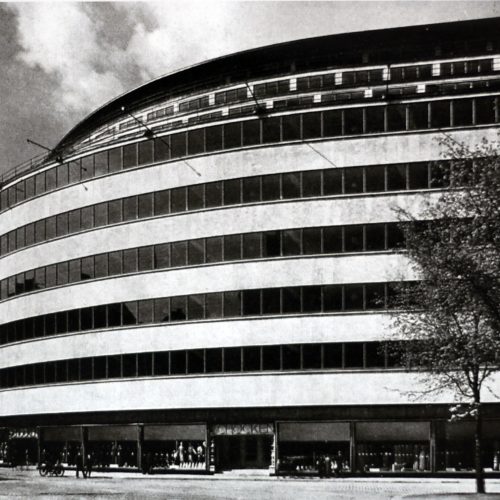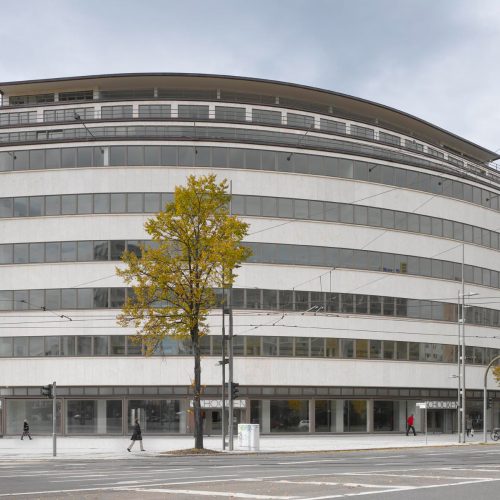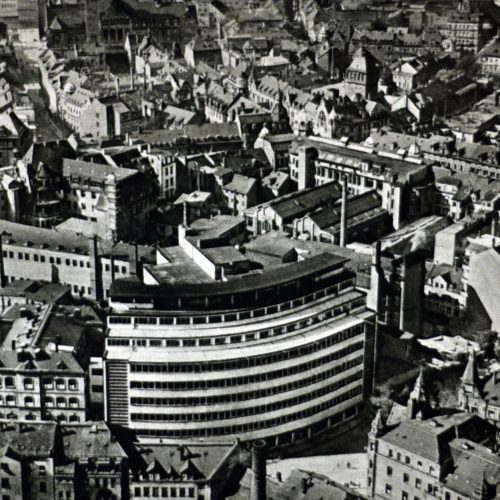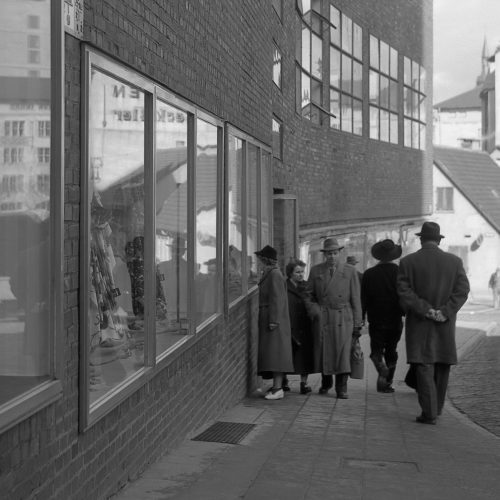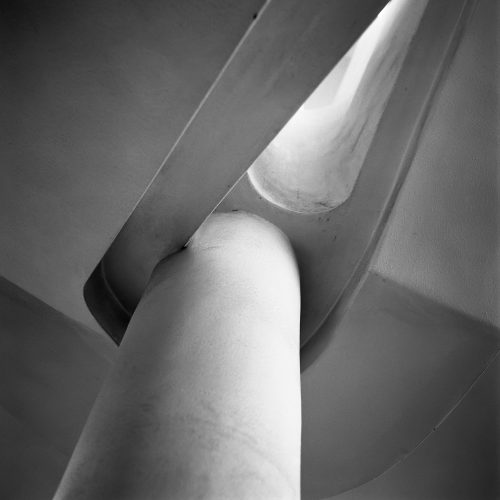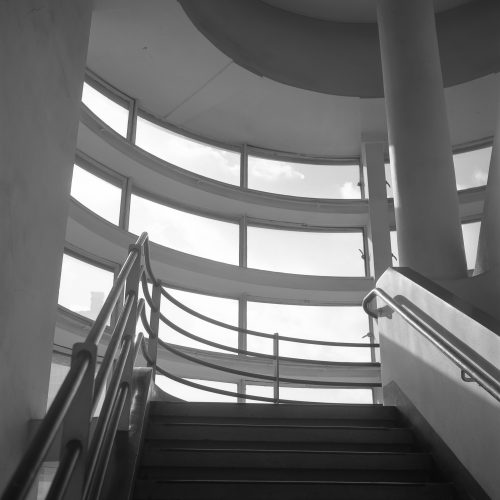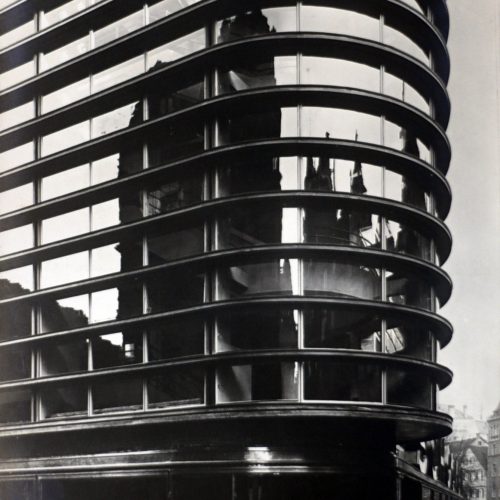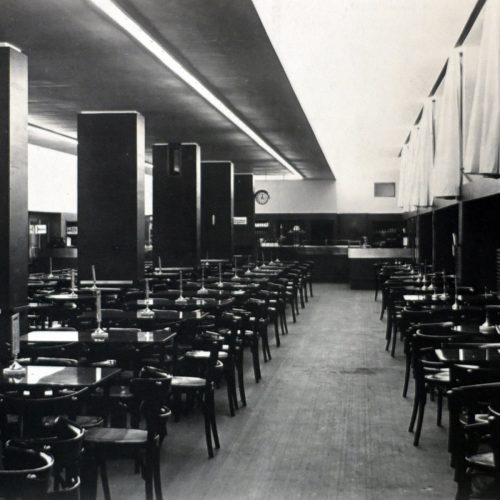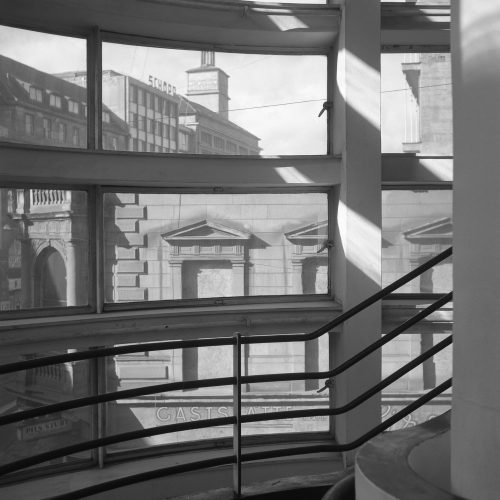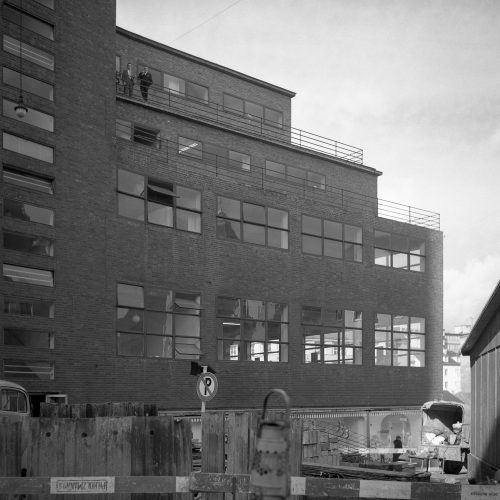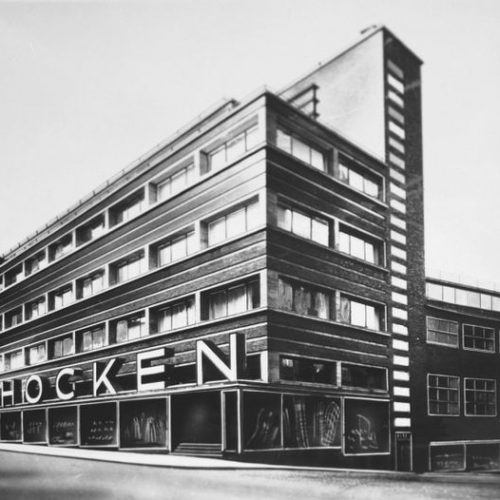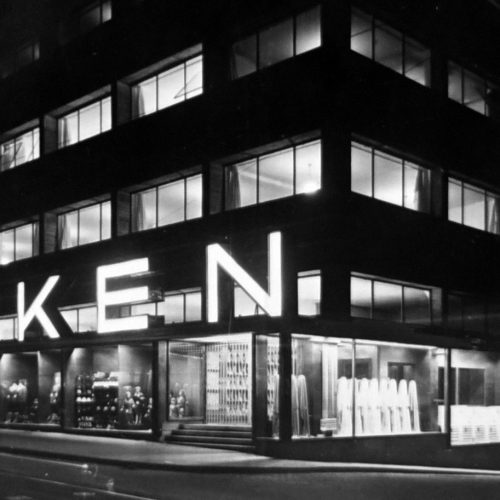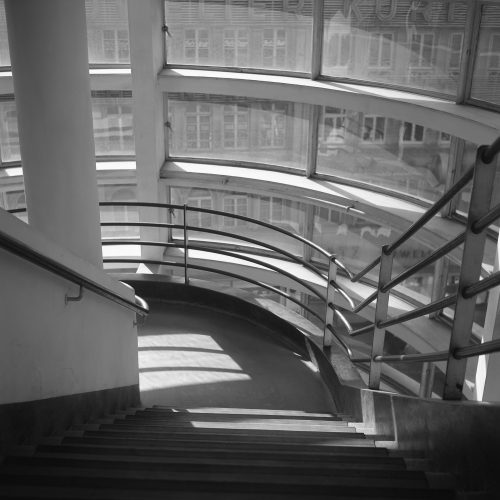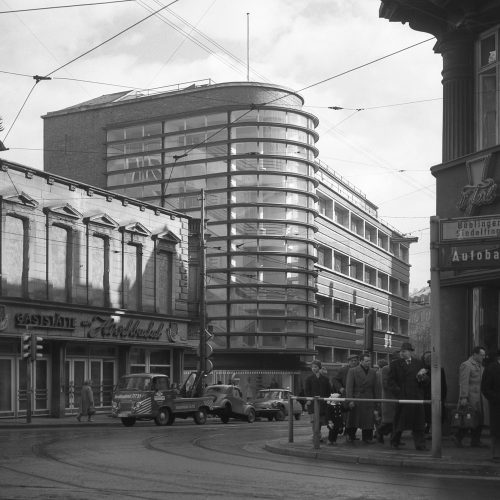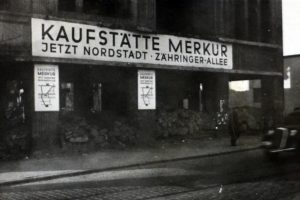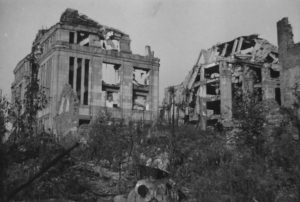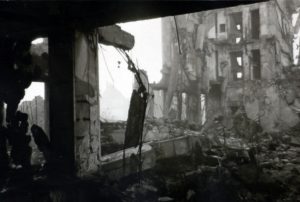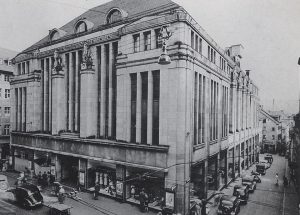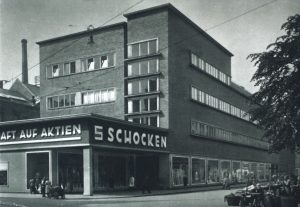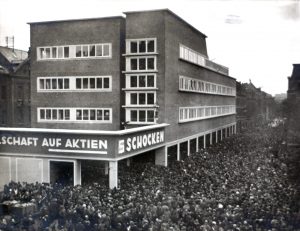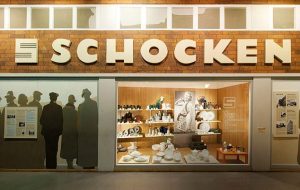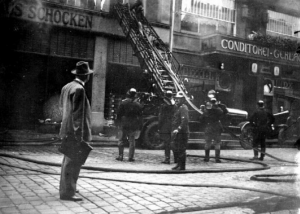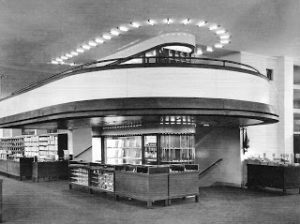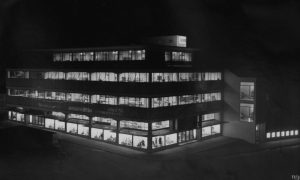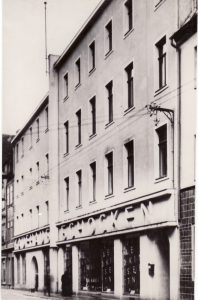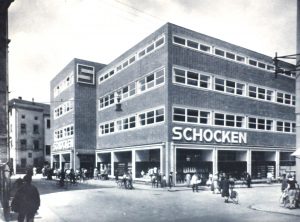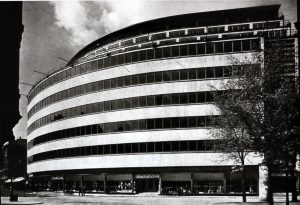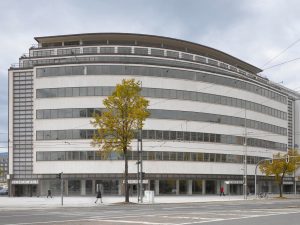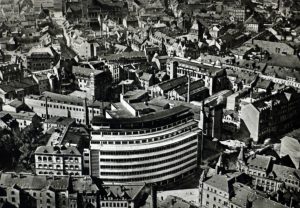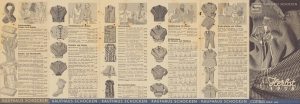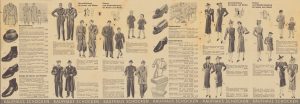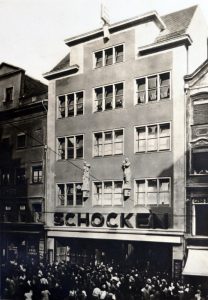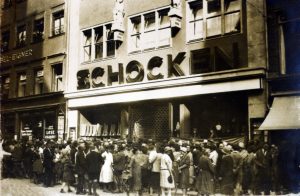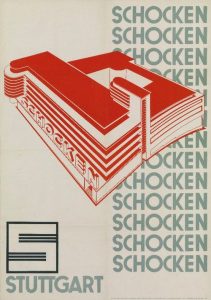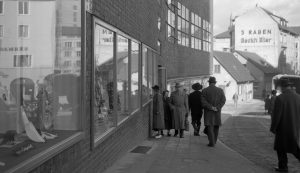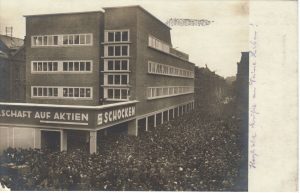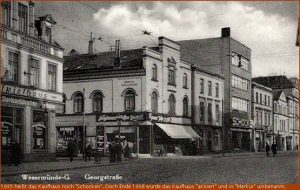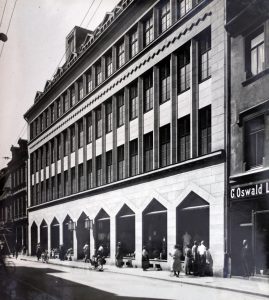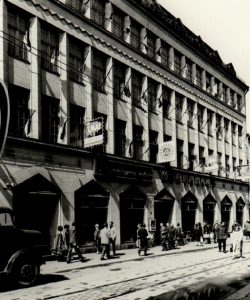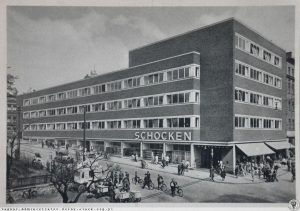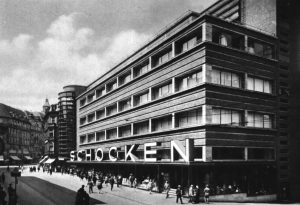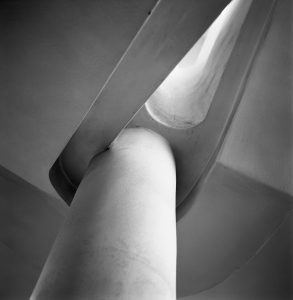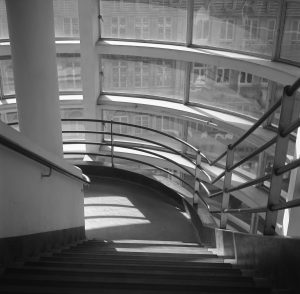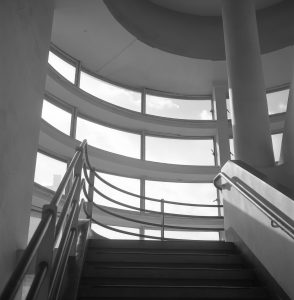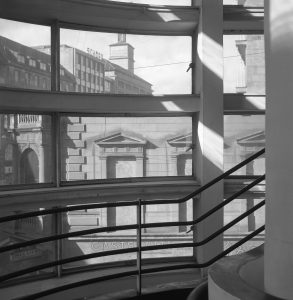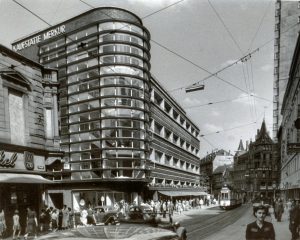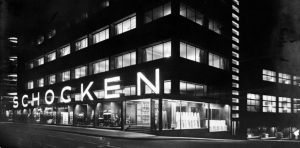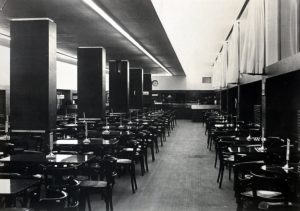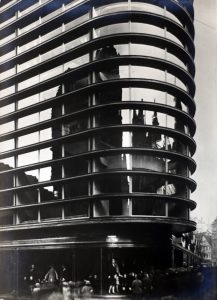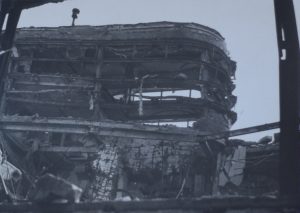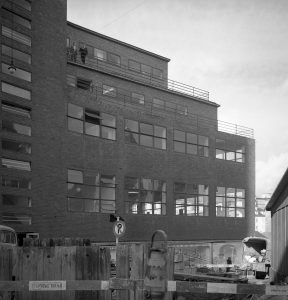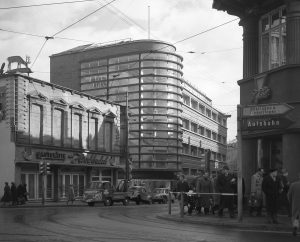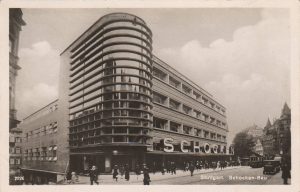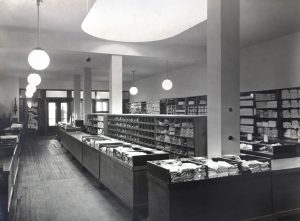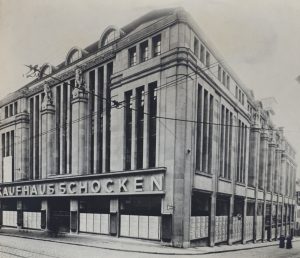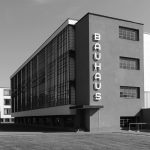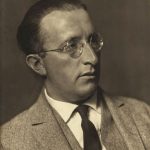Schocken Department Stores
Coming from from a humble and poor background, and starting their careers as shop apprentices, the brothers Salman and Simon Schocken built Germany’s fourth largest department store chain, employing more than 6,000 people. The chain’s anchor stores in Nuremberg (1926), Stuttgart (1928), and Chemnitz (1930), were designed by Erich Mendelsohn, Schocken’s protégé and favorite architect, and are now considered classical masterpieces of 20th century architecture.
The department store chain expanded at a dizzying pace, opening a new store almost every year. The chain’s mail-order department shipped affordable, high-quality clothing, furniture, textiles, accessories and housewares all over the country. Throughout Germany, customers and store personnel became fiercely loyal to the Schocken brand and legacy. In 1929, following the death of his brother Simon in a car accident, Salman became the chain’s sole owner and manager.
When Hitler came to power in January, 1933, Nazi party newspapers blamed Schocken and other Jewish businessmen for “exploiting the Volk”. Julius Streicher, chief editor of the Nazi newspaper Der Stürmer, waged an all-out war against Schocken, warning Aryan citizens from shopping in the chain. SA Nazi militia blocked and vandalised the stores. Yet, unwilling to shut down a business that was so instrumental in raising the Volk’s standard of living, the Nazis set out to “Aryanize” the chain. At the end of 1938, Schocken was forced to “sell” his chain, under duress, for a fraction of its real value. The new “owners” were a group of German banks.
After World War II ended in 1945, the defeated German Reich was divided into West Germany and East Germany, and so were the chain’s department stores. In 1949, Schocken managed to gain control over some of the confiscated stores that were located in West Germany. Alas, neither he nor his children wanted to resettle back in Germany. He tried running the business from his offices in New York and Jerusalem, which turned out to be a frustrating affair. None of his children wanted to get involved in a business in Germany, preferring to pursue careers of their own, in Israel and in the USA. In 1953 Schocken sold the West German part of his department stores.
In 2015, the State of Saxony financed a complete restoration of Schocken’s grand store in Chemnitz. Looking very much like the original Mendelsohn landmark, complete with the striking glass facade and the original Schocken sign, the building now houses the SMAC Museum, featuring displays of human history in the region. A stand-alone, two-story wing is dedicated to Salman Schocken’s life and legacy.
Dozens of grandchildren and great-grandchildren of Schocken travelled to Chemnitz, to attend the museum’s opening. Other visitors were aging city denizens who remained loyal to the Schocken brand, more than 70 years after the store’s closure. They were later hosted by the mayor of Chemnitz in a special ceremony, commemorating the unique role that the Schocken store played in the city’s history.
Schocken’s Chemnitz Store
Designed by Erich Mendelsohn, the Chemnitz department store opened in 1931, the largest Schocken store to date. A local newspaper commented that the buying power of the city residents has increased considerably, since Schocken’s stores were known for offering high-quality goods at affordable prices.
During World War II, most of the city of Chemnitz was razed to rubble. Miraculously, the Schocken Store survived the allied bombings and was left intact. Under the post-war communist regime, the sleek glass-and-steel building – an icon of Weimar modernism – was used as a depot for coal supplies and military spare parts. Later, it became a dreary department store, ran by the Communist regime.
In 2015, the State of Saxony financed a complete restoration of the Schocken-Mendelsohn landmark. The building now houses the SMAC Museum, featuring displays of human history in the region. A stand-alone, two-story wing is dedicated to Salman Schocken’s life and legacy.
Schocken’s Stuttgart Store
Designed by Erich Mendelsohn, the Schocken Stuttgart store opened in 1923 in a gray, neglected corner of the city of Stuttgart. The store’s striking modernist design was based on clean lines, bold combinations of steel and glass, and a giant, brightly illuminated Schocken logo. Mendelsohn, who was married to a cellist and deeply inspired by music, said that the building’s concept formed in his mind during a Bach concert.
The architects Mies Van der Rohe, Gropius, and Le Corbusier made pilgrimages to the new Schocken landmark, sealing Mendelsohn’s reputation as one of Germany’s premier architects. A local Stuttgart journalist wrote about the store: “During the evening dusk the glass stairwell, magically lit, transports itself onto the street… The light, as the illuminating potential of the metropolis, becomes a modern form of enchantment. Akin to a fairytale, it’s lovely impression beams out like a spell.”
